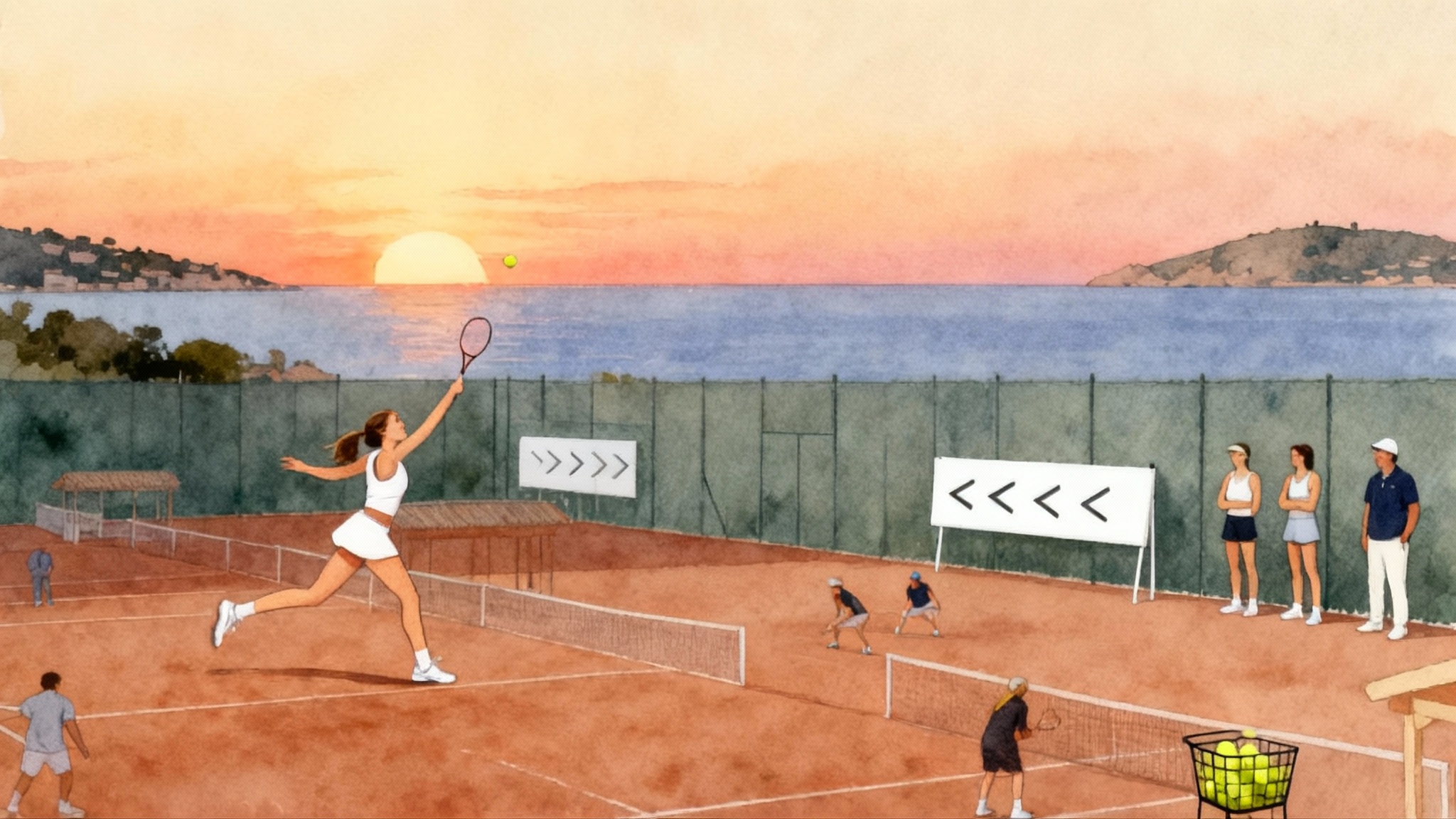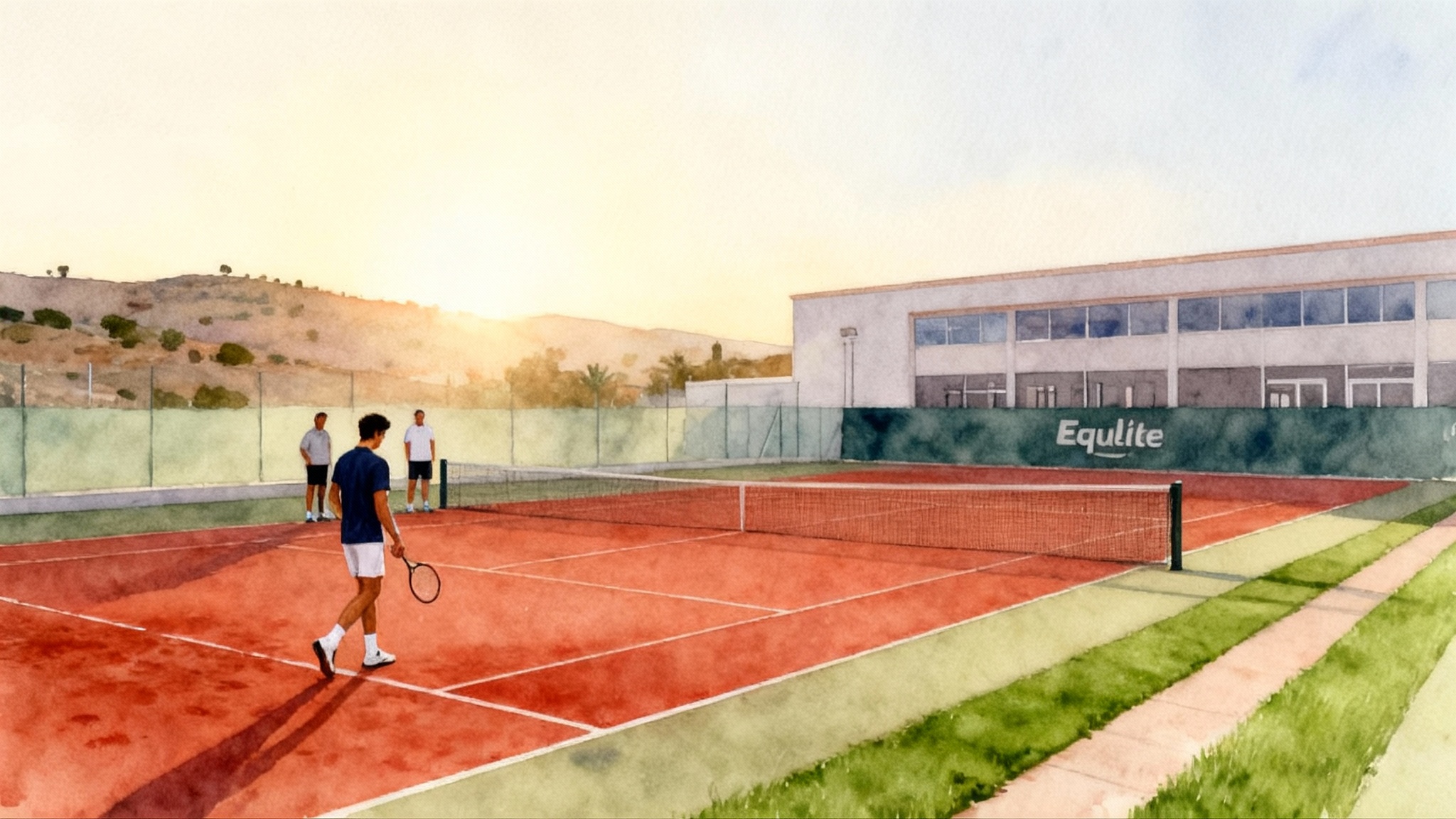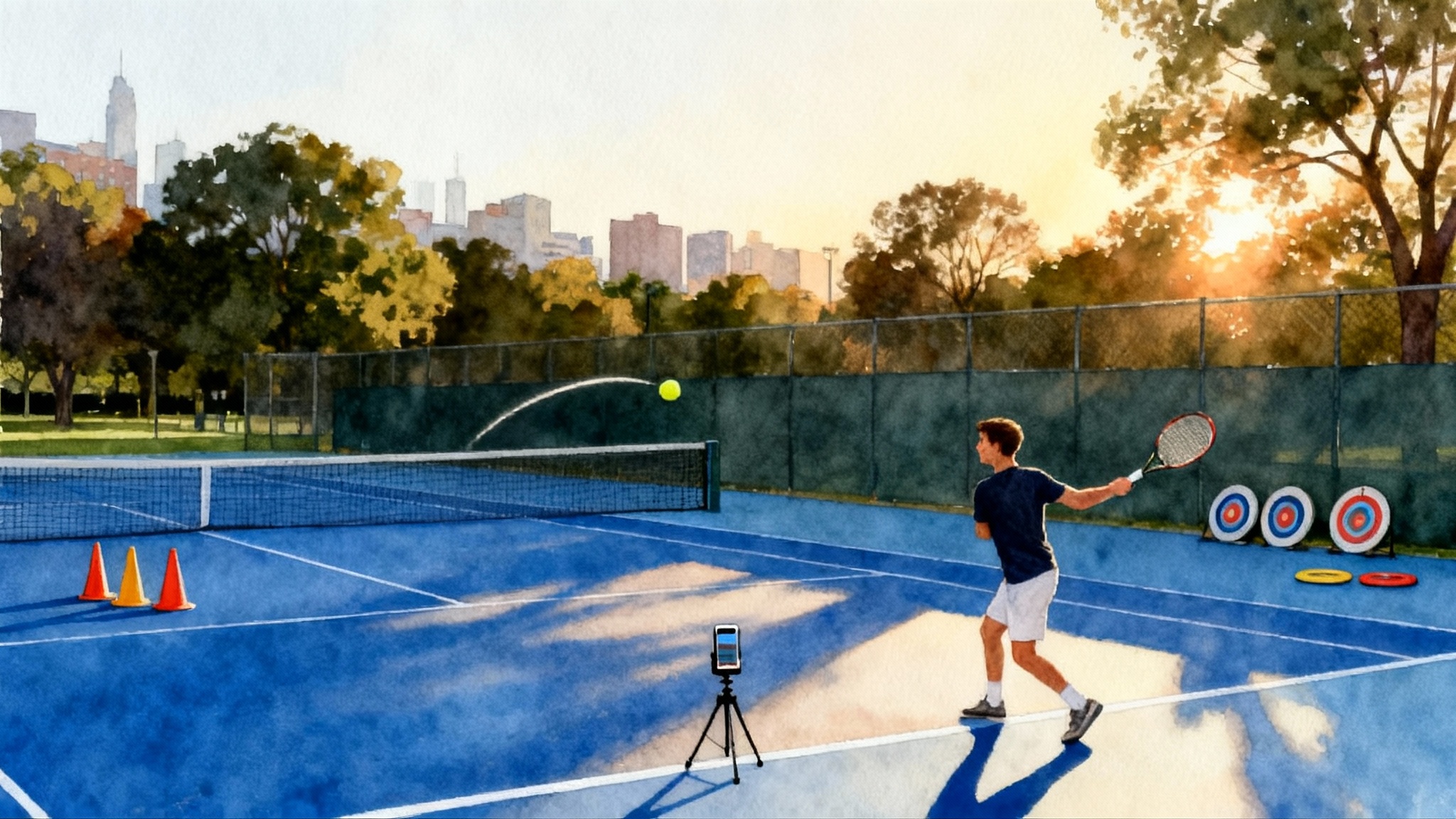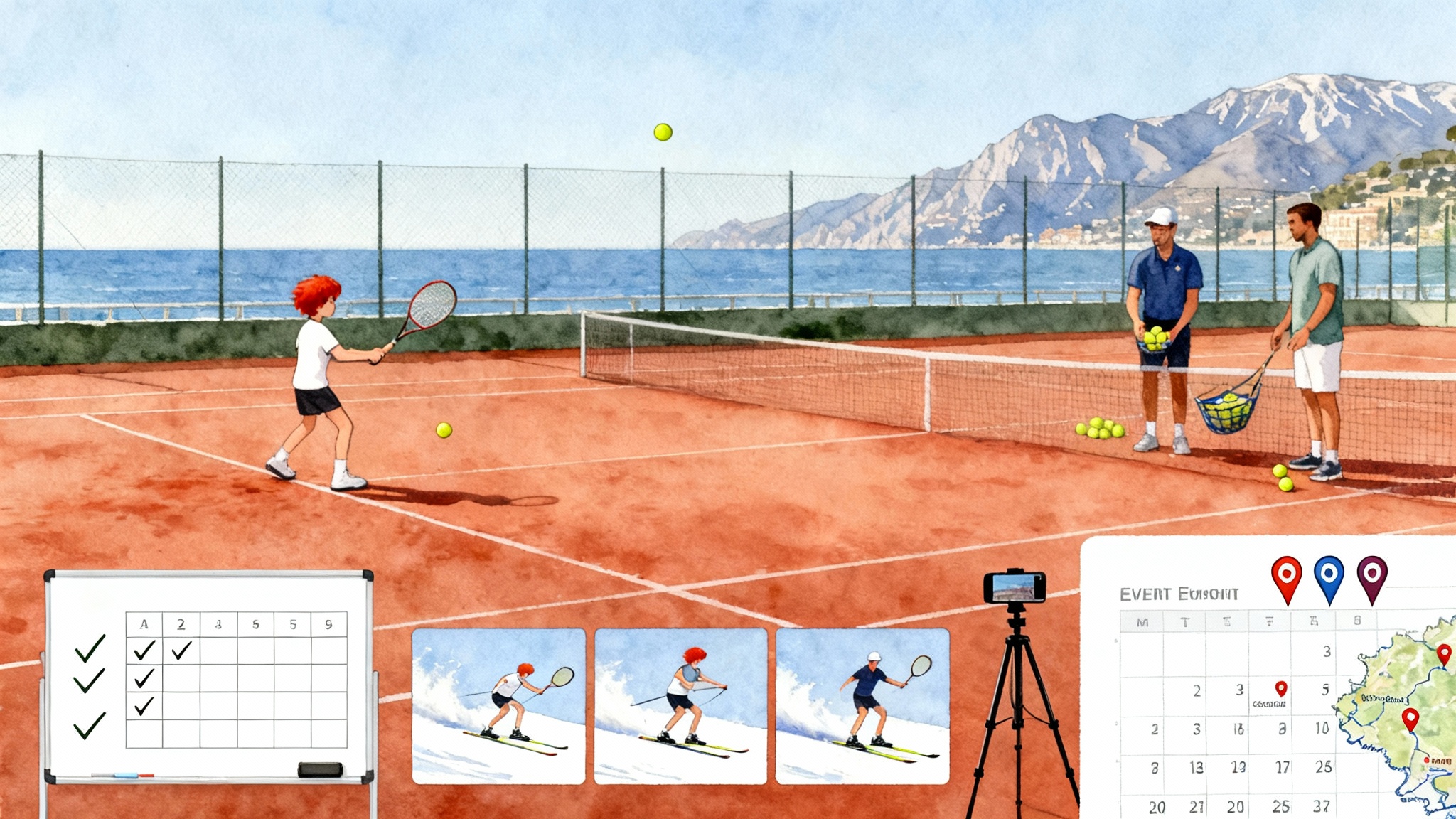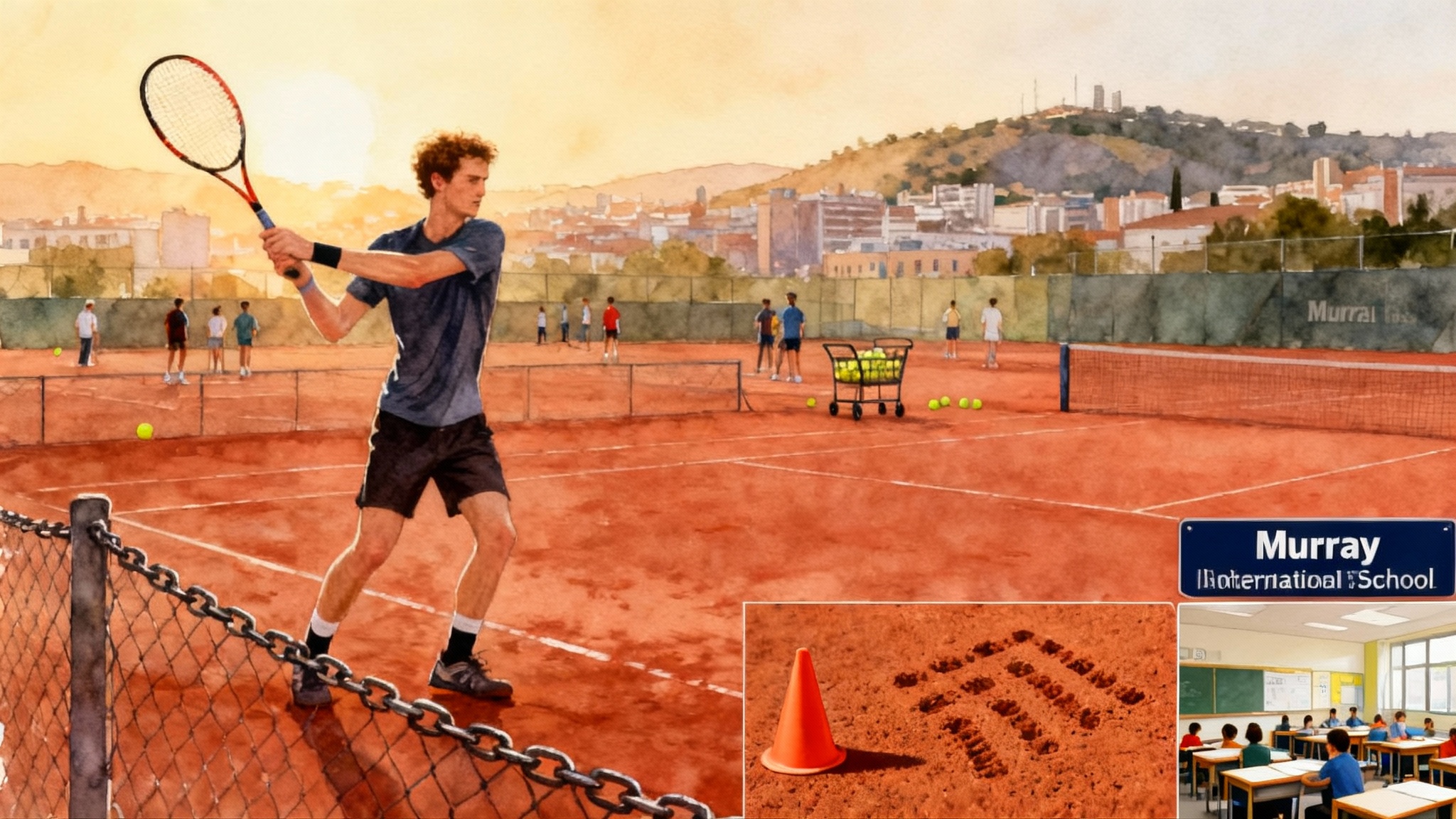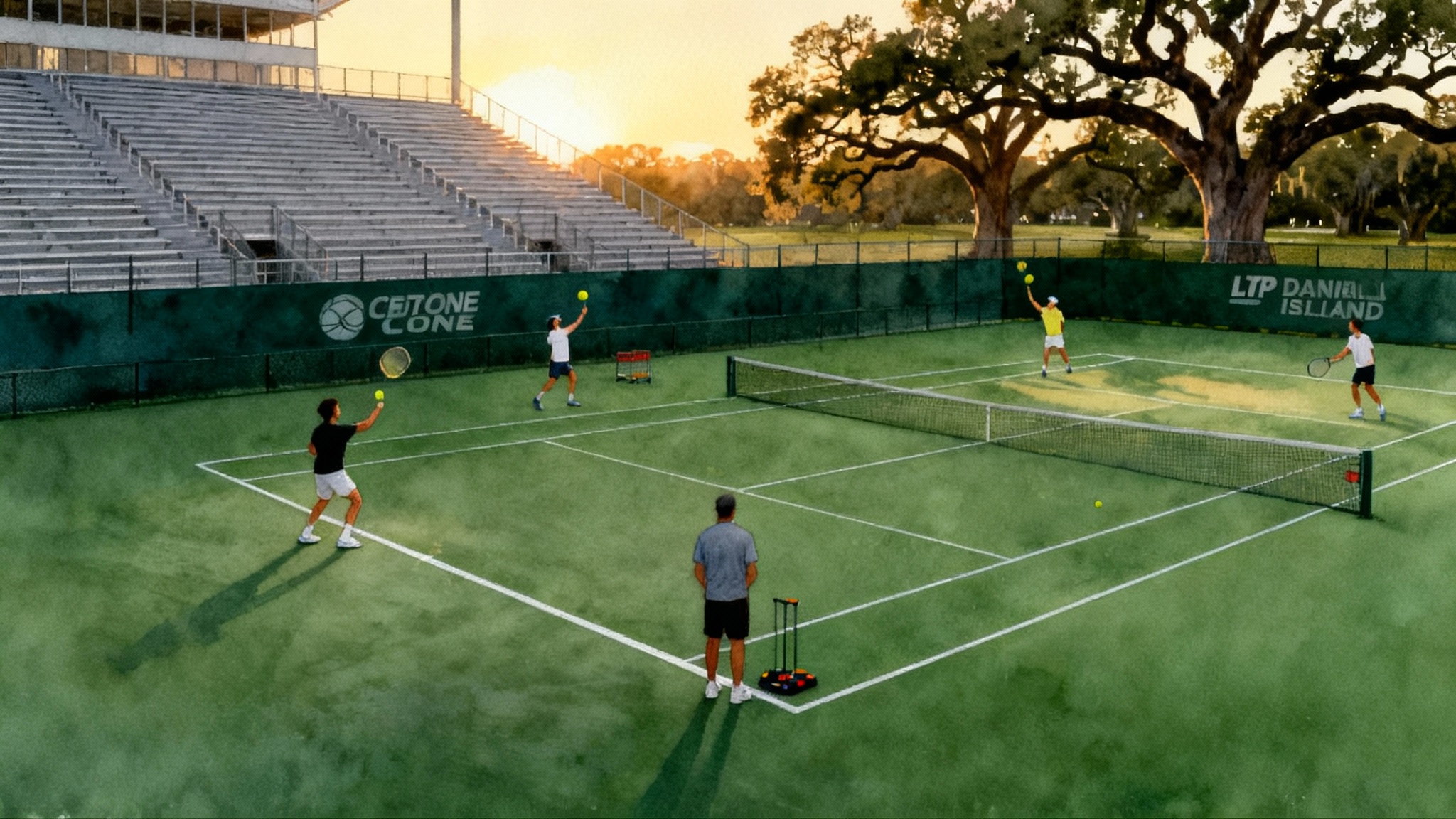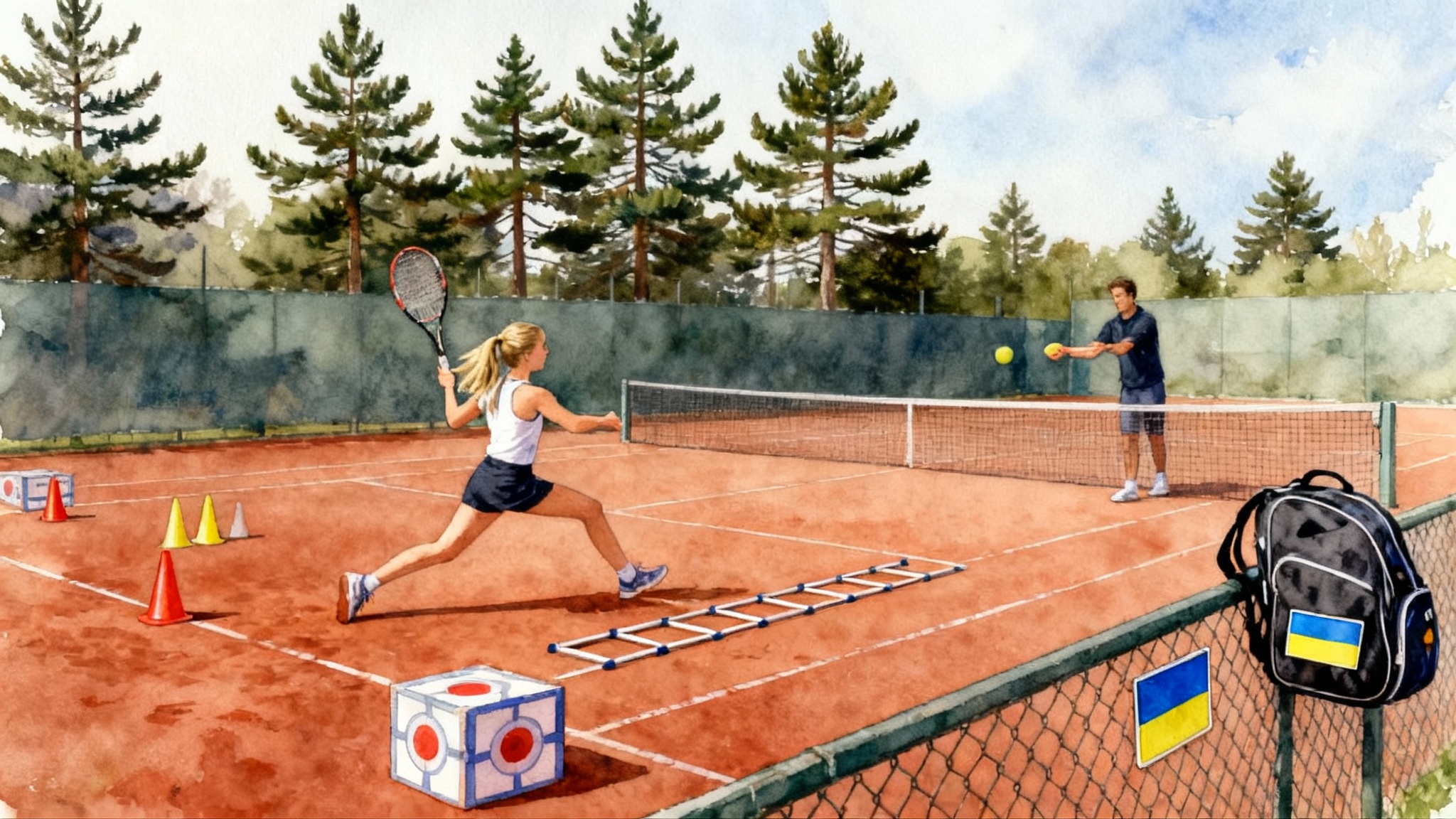Champ’Seed to Center Court: How Mouratoglou Academy Shaped Gauff
Coco Gauff’s ascent did not follow the usual academy-boarding script. It blended a Champ’Seed scholarship, recurring training blocks on French clay, and a family-led core that added specialists at the right time. Here is the playbook parents can use.
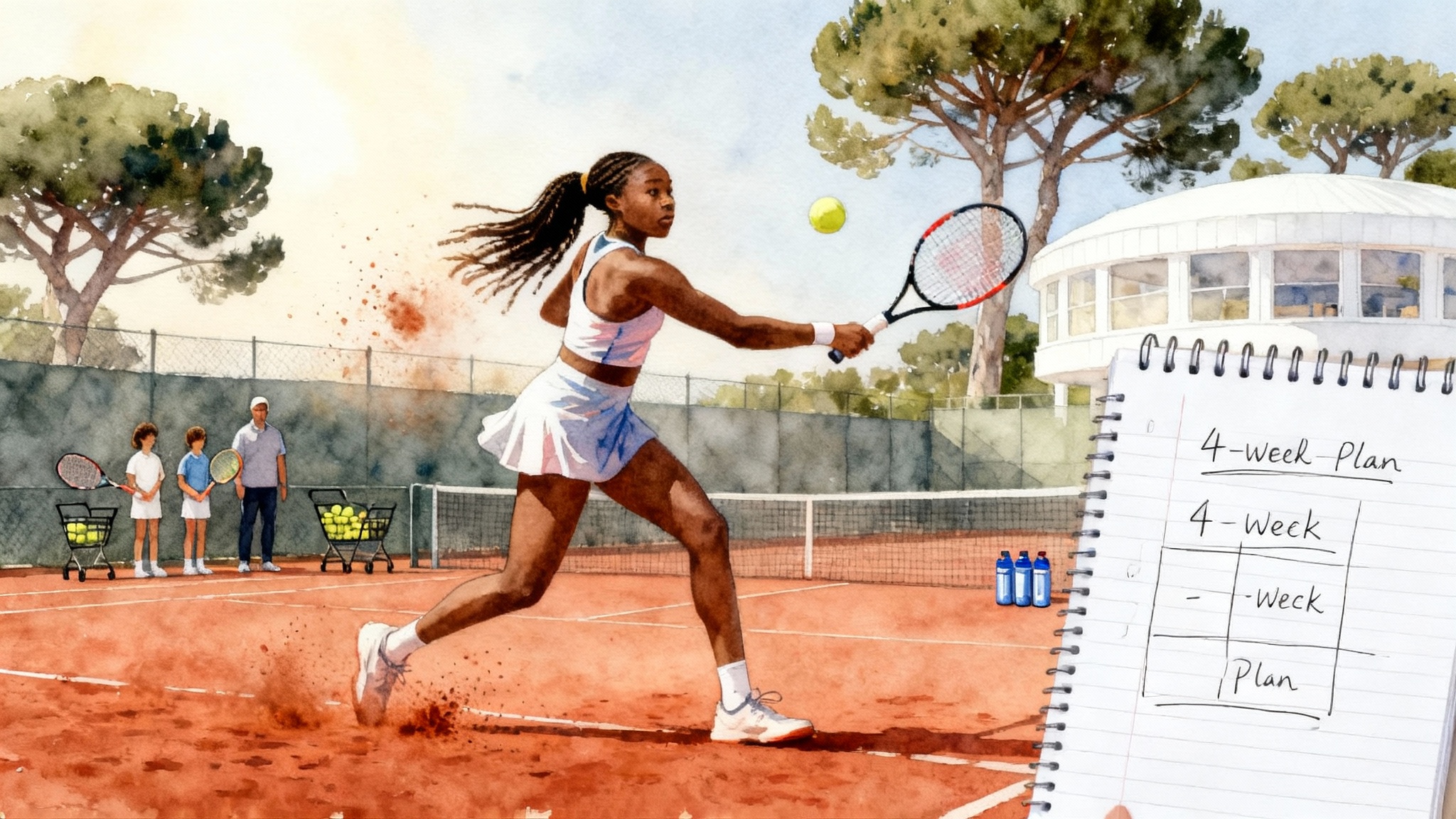
The origin story parents rarely see
Every breakout looks sudden from the outside. Inside a family, it feels like a string of careful bets. Coco Gauff’s rise is a case study in choosing the right moments to lean on an elite academy and the right moments to stay anchored at home. She was identified as a pre-teen by Patrick Mouratoglou’s talent pipeline and supported by the Champ’Seed Foundation, then returned for recurring training blocks on the red clay of the French Riviera. The rest of the time, her family ran the project from home, adding expert staff only when a new level demanded it.
This mix of selective academy time, targeted clay blocks, and deliberate staffing changes is repeatable. It does not require a child to board full time at a distant campus. It does require a plan.
How Champ’Seed spotted a future major champion
Champ’Seed exists to remove one of the biggest barriers to development: cost. The foundation identifies promising juniors who lack the resources to access world-class coaching and competition. Grants often cover training blocks, coaching time, travel support, or equipment, so the athlete can plug into a professional setting at key windows without moving abroad. Read their own description in the Champ’Seed Foundation mission.
For Gauff, the foundation’s backing unlocked time at the Mouratoglou Academy in Biot, France. This did not turn into a permanent boarding arrangement. Instead, it created a runway for concentrated progress during the weeks that mattered most, especially before clay events in Europe.
Think of Champ’Seed as a flexible power adapter. The athlete keeps the home circuit running, but when a higher voltage is needed, the adapter turns on and safely boosts the current.
Selective academy stints vs. full-time boarding
- Full-time boarding maximizes immersion. It offers daily sparring partners, strength and conditioning supervision, on-site schooling, and a turnkey environment. That works for families who want the academy to be the athlete’s primary home base.
- Selective stints prioritize bursts of development. In this model, the athlete remains home-based, then plugs into the academy for two to six weeks at a time. The family retains strategic control and continuity, and the athlete returns home with specific upgrades to consolidate. This hybrid approach also shows up in player stories like how Equelite built Alcaraz.
Gauff’s path tilted toward the second option. Her family kept the steering wheel. Mouratoglou’s team provided a proving ground at critical intervals, especially on clay. The alternation mattered. Huge accelerations happened on campus, but stability and identity were built at home.
Why French clay mattered to an American prodigy
Clay courts turn every practice into an x‑ray. Movement must be clean, balance must be centered, and point construction must have a purpose. On sliding clay you cannot fake spacing or footwork. That is exactly why targeted clay blocks help a young player grow faster. Families exploring France-based options can also look at All In Academy campuses.
Here is what those blocks typically deliver:
- Patience without passivity: Training on clay teaches how to build points with margin, then recognize the right ball to finish. The player learns to attack safely before attacking big.
- Repeatable contact: Longer rallies create more touches, which hardwires a stable contact point under pressure.
- Efficient movement: Learning to slide in and out of corners makes footwork more economical, which later pays off on faster hard courts.
- Tactical clarity: Coaches can shape patterns that reappear across surfaces. High to the backhand, change of height to the forehand, then take space with an approach. Reps on clay make those choices automatic.
A recurring clay block functions like a preseason inside the season. The athlete strips the stroke to its essentials and rebuilds it with better habits.
Family-led coaching, then timely pro additions
Gauff’s family was the permanent staff. Home base meant a stable voice, protected routines, and a support system that knew her personality first and her ranking second. As the level climbed, the team added targeted specialists: a tour-experienced coach to sharpen patterns against top 20 pace, a fitness coach to manage workload during multi-week swings, a match-scout who could translate video into one-page plans. A similar home-first approach helped shape Frances Tiafoe’s path to the ATP Tour.
The lesson is not that families must coach forever. It is that families should keep ownership of the long-term plan and invite the right experts at the right time. When Gauff entered the late-junior and early-pro phases, a seasoned coach helped convert raw athleticism into repeatable patterns, which in turn helped translate junior promise into a first major title in New York. Specialists were additions, not replacements of the athlete’s identity.
What Mouratoglou’s program actually added
Elite academies often sound abstract. In practice, the value is concrete:
- Daily high-level sparring: A 40-minute block against a stronger hitter reveals whether a new backhand grip holds up at speed. If it breaks, adjustments happen that day.
- Integrated feedback: Technical, tactical, physical, and mental notes are shared within one coaching group. That reduces mixed messages.
- Tournament-grade routines: Warm-up, scouting, post-match debriefs, and next-day adjustments mirror the professional tour. The player learns habits, not hacks.
Mouratoglou’s own site describes how Gauff entered the academy pipeline at 11 and continued to return for preparation, especially around the clay season. See the reference that she was Gauff selected at 11, then maintained recurring links to the French base.
Inside a four-week clay block that works
Families ask what a “block” actually looks like. Below is a realistic four-week outline you can adapt. Distances are illustrative so you can feel the rhythm.
Week 1: Reset and base
- Technical focus: Height over net, deep crosscourt patterns, second-serve quality. Two-court dimensions are used to exaggerate margin.
- Movement focus: Stops and starts, first step out of the split, controlled slides. Short ladder work to prime feet without fatigue.
- Fitness: Aerobic base. Thirty-five minutes steady off-court, two threshold sessions.
- Matches: Conditioned sets only. For example, every point must start with a kick serve to the backhand.
Week 2: Build the weapons
- Technical focus: Forehand shape inside-out and inside-in from the deuce corner. Backhand down-the-line release from neutral.
- Movement focus: Recovering forward after a deep crosscourt. Two-step approach and split on the service line.
- Fitness: Speed endurance. Court sprints of 15 to 20 seconds, full recovery. Lower-body strength twice a week.
- Matches: Two practice sets with constraints. For example, first strike must land past the service line.
Week 3: Transfer to pressure
- Technical focus: Serve plus one. Mix of targets on first serve, automatic high-margin second serve.
- Movement focus: Defensive to neutral swing after a wide backhand. Emphasis on balance at contact.
- Fitness: Mixed intervals, match-length simulations.
- Matches: Three full sets across the week, two against stronger hitters. Post-set video quick-review to confirm or correct patterns.
Week 4: Taper and sharpen
- Technical focus: No new ideas. Reps on the serve patterns that will be used next tournament.
- Movement focus: Short, explosive sets. Minimal sliding to save the legs.
- Fitness: Reduced volume, keep sharpness.
- Matches: Two match plays with a full routine. Scouting sheet before, two bullet points after.
The measure is simple. If a pattern cannot survive Week 3 against a big hitter, it is not ready for tournament play. If it survives, it is stitched into the game plan for the next event.
Schooling and travel: how the logistics work
- Keep a single academic point person: Whether your child is in traditional school or online, designate one counselor as the continuity anchor. Share travel dates in advance and agree on assessment windows.
- Batch the calendar: Group tournaments by region. Build school-heavy weeks before travel and school-light weeks during events. Teachers appreciate predictability more than perfection.
- Protect recovery days: A day off is not a school catch-up day in disguise. Recovery protects learning as much as performance.
Many academies support dual-track academics. If you are unsure how to combine options near you, start with academy profiles and request sample schedules.
Scholarships: how to compete for support
A strong application is a miniature scouting report. Build it like a coach would:
- Results with context: List recent wins and losses, not just ranking. Add brief notes about conditions and style matchups.
- Video that answers questions: Two short clips. First, six minutes of point play from behind the baseline. Second, a four-minute highlight reel that shows patterns you actually use in matches.
- Coach references that address potential: Ask current coaches to write about habits and responsiveness, not adjectives. That tells foundations how a player will use support.
- A clear plan for the grant: Explain what a three or four-week block would cover and what success would look like. For example, a minimum of three tournaments in Europe after a clay block.
- Update cadence: Offer a two-page monthly update with data. First-serve percentage, break points created, and neutral-forehand depth. Brief, objective, repeatable.
Foundations and academies want to back a process that compounds. Show them one.
Balancing academy time with a stable home base
Use a decision tree:
- Technical change needed? If yes, schedule a two or three-week academy window.
- Consolidation going well at home? If yes, delay travel and bank predictable practice.
- Local sparring ceiling hit? If yes, seek a block with partners who punish loose balls.
Define the purpose of each trip in one sentence before booking it. That sentence becomes the daily focus during the block and the report card after it.
When to add pro staff around a family-led team
Look for these indicators:
- Many close matches lost the same way: Bring in a tactical coach to redesign patterns for specific opponents.
- Gains in training that vanish in tournaments: Hire a performance psychologist or a routine specialist to embed habits that travel.
- Serve or return stalling: Add a serve technician for a twelve-session block to rebuild targets and rhythm.
How to test fit:
- Trial the specialist for one or two weeks with clear goals. For example, reshape the second-serve toss and raise usable kick-serves above 60 percent in practice.
- Keep debriefs short and numbers based. If communication or results do not improve within the trial, move on quickly without drama.
A template calendar for ages 13 to 16
This outlines the idea, not a rigid rule.
- January to March: School-heavy, local events, a seven to ten day fundamentals block at a regional academy.
- April to June: Two to four weeks of clay training in Europe, then two European junior events to pressure-test gains.
- July to August: Hard-court block at home or at an academy with outdoor heat. Two tournaments plus a recovery week.
- September to November: Short blocks to target serve and return. One international trip if results justify it.
- December: Off-season rebuild. Weight room basics, serve patterns, mental skills. Two exhibitions to rehearse routines.
What parents can copy from Gauff’s pathway
- Keep the home base as identity control: The player’s values, routines, and joy live there. Use the academy to accelerate, not to replace the child’s tennis culture.
- Choose clay blocks to teach patience at speed: Clay slows the ball just enough for a young player to feel shape and spacing. Those lessons transfer to hard courts as better decisions.
- Add specialists when the data asks for them: Track basic numbers. When you can describe the problem in metrics, hire the right fix.
- Treat scholarships as partnerships: Foundations are investing in a process. Communicate like a partner, not an applicant.
- Structure feedback loops: Film, review, rehearse. The fastest improvers run the same loop every week.
Why this model converted promise into big-stage wins
Gauff’s trajectory shows how targeted resources beat generic volume. The foundation opened doors at the right time. The academy provided a high-tension lab where habits were tested and rebuilt. The family held the compass and added experts with timing. That mix produced a player who knows who she is under pressure and knows how to upgrade when the game demands it.
Parents do not need to recreate her biography. They can borrow the blueprint: a clear home base, periodic high-level blocks on the surface that teaches the most, scholarships that fuel the right windows, and staff who arrive to solve specific problems.
Your next step
Map the year in twelve boxes. Mark two or three windows where a focused block could change the season. Draft a one-page plan and send it to an academy that fits your child’s style. If you want a quick way to compare options and filter by surface or country, start with shortlists, sample schedules, and coach calls.
